Description
How big do mini potbelly pigs get?. Have you ever dreamed of having a cute, pint-sized piggy as a pet? Mini potbelly pigs have captured the hearts of many animal lovers with their adorable snouts and charming personalities. But here’s the million-dollar question: just how “mini” are these porcine companions?
The truth is, the term “mini” can be misleading when it comes to potbelly pigs. Many aspiring pig parents are shocked to discover that their tiny piglet grows into a not-so-miniature adult. This size surprise has led to countless rehoming situations and disappointed pet owners. But fear not! By understanding the real size expectations for mini potbelly pigs, you can make an informed decision about whether these charming creatures are the right fit for your home and lifestyle.
In this post, we’ll dive into the fascinating world of mini potbelly pigs, exploring their growth patterns, factors affecting their size, and how they compare to other pig breeds. We’ll also share essential tips for caring for these unique pets, ensuring you’re well-prepared for life with a properly sized mini potbelly pig. So, let’s get started and unravel the mystery behind these little (or not-so-little) oinkers!
Understanding Mini Potbelly Pigs
A. Definition of mini potbelly pigs
Mini potbelly pigs, also known as teacup pigs or micro pigs, are a smaller variety of the Vietnamese potbellied pig breed. These pigs are bred specifically for their compact size, making them popular as household pets. However, it’s important to note that the term “mini” is relative, and these pigs can still grow to a considerable size compared to other common household pets.
B. Common misconceptions about size
Many people have misconceptions about the size of mini potbelly pigs, often expecting them to remain extremely small throughout their lives. This misunderstanding is often fueled by:
- Misleading marketing tactics
- Photos of young pigs that haven’t reached their full size
- Lack of accurate information from some breeders
To clarify these misconceptions, let’s compare the expected and actual sizes of mini potbelly pigs:
| Age | Expected Size (Common Misconception) | Actual Average Size |
|---|---|---|
| 3 months | 10-15 lbs | 15-25 lbs |
| 6 months | 20-30 lbs | 30-50 lbs |
| 1 year | 30-40 lbs | 50-100 lbs |
| Full grown | 40-60 lbs | 100-200 lbs |
C. Origin and breed characteristics
Mini potbelly pigs originated from the Vietnamese potbellied pig, which was first imported to the United States in the 1980s. Breeders then selectively bred these pigs for smaller size, creating the mini potbelly pig variety. Some key characteristics of mini potbelly pigs include:
- Compact, stout bodies
- Pot-bellied appearance
- Short, upright ears
- Intelligent and social nature
- Various coat colors and patterns
Despite their smaller size compared to farm pigs, mini potbelly pigs still require proper care, space, and nutrition to thrive. With this understanding of mini potbelly pigs, let’s explore the factors that affect their size.
Factors Affecting the Size of Mini Potbelly Pigs
Now that we understand what mini potbelly pigs are, let’s explore the various factors that influence their size. While these pigs are generally smaller than their farm counterparts, several elements can impact their growth and ultimate dimensions.
A. Environmental factors
The environment in which a mini potbelly pig is raised plays a crucial role in its development. Factors such as living space, temperature, and stress levels can all affect a pig’s growth. For instance, pigs raised in cramped conditions may experience stunted growth, while those in spacious environments tend to grow larger.
B. Exercise and activity level
Just like humans, the amount of physical activity a mini potbelly pig engages in can influence its size. Regular exercise helps maintain a healthy weight and muscle tone, while a sedentary lifestyle can lead to obesity and related health issues.
C. Diet and nutrition
Proper nutrition is essential for the healthy growth of mini potbelly pigs. Overfeeding or providing an imbalanced diet can result in excessive weight gain, while underfeeding may lead to stunted growth. Here’s a breakdown of the ideal diet composition for mini potbelly pigs:
| Nutrient | Percentage of Diet |
|---|---|
| Protein | 12-14% |
| Fiber | 5-10% |
| Fat | 2-4% |
| Vitamins and Minerals | As recommended by a veterinarian |
D. Genetics and breeding
The genetic makeup of a mini potbelly pig is perhaps the most significant factor in determining its size. Reputable breeders focus on selecting for smaller size traits, but it’s important to note that even within the same litter, pigs can vary in their growth potential.
Key genetic factors affecting size include:
- Parental lineage
- Breed-specific traits
- Genetic mutations
With these factors in mind, it’s clear that the size of a mini potbelly pig is influenced by a complex interplay of environmental, lifestyle, dietary, and genetic elements. Next, we’ll delve into the average size range you can expect from these charming pets.
Average Size Range for Mini Potbelly Pigs
Height and Length Measurements
Mini potbelly pigs typically reach a height of 14 to 18 inches at the shoulder when fully grown. Their body length, from snout to tail, usually ranges from 24 to 30 inches. These measurements can vary slightly depending on the individual pig’s genetics and care.
Growth Patterns from Piglet to Adult
Mini potbelly pigs experience rapid growth in their first year, followed by a slower growth rate until they reach full maturity at around 3-4 years old. Here’s a typical growth pattern:
- Birth: 2-3 inches tall, 6-8 inches long
- 3 months: 8-10 inches tall, 12-15 inches long
- 6 months: 12-14 inches tall, 18-22 inches long
- 1 year: 14-16 inches tall, 22-26 inches long
- 3-4 years (full maturity): 14-18 inches tall, 24-30 inches long
Weight Expectations
The weight of mini potbelly pigs can vary significantly based on diet, exercise, and genetics. Here’s a general weight range guide:
| Age | Weight Range |
|---|---|
| Birth | 1-2 lbs |
| 3 months | 15-25 lbs |
| 6 months | 30-50 lbs |
| 1 year | 50-70 lbs |
| Adult (3-4 years) | 70-150 lbs |
It’s important to note that some mini potbelly pigs may exceed these ranges, especially if overfed or lacking proper exercise. A healthy adult mini potbelly pig should ideally weigh between 70-150 pounds, with some individuals falling on either side of this range.
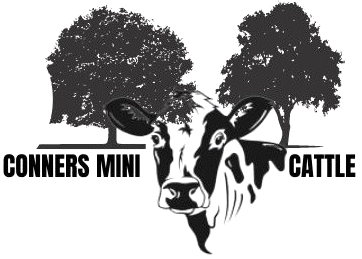

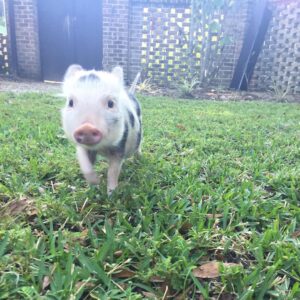
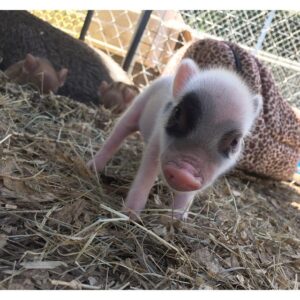
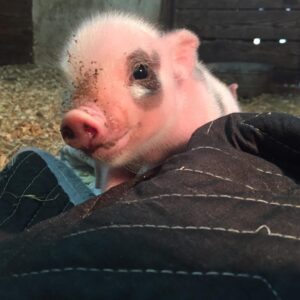
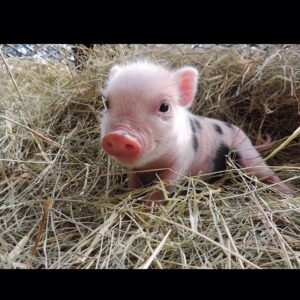
Reviews
There are no reviews yet.